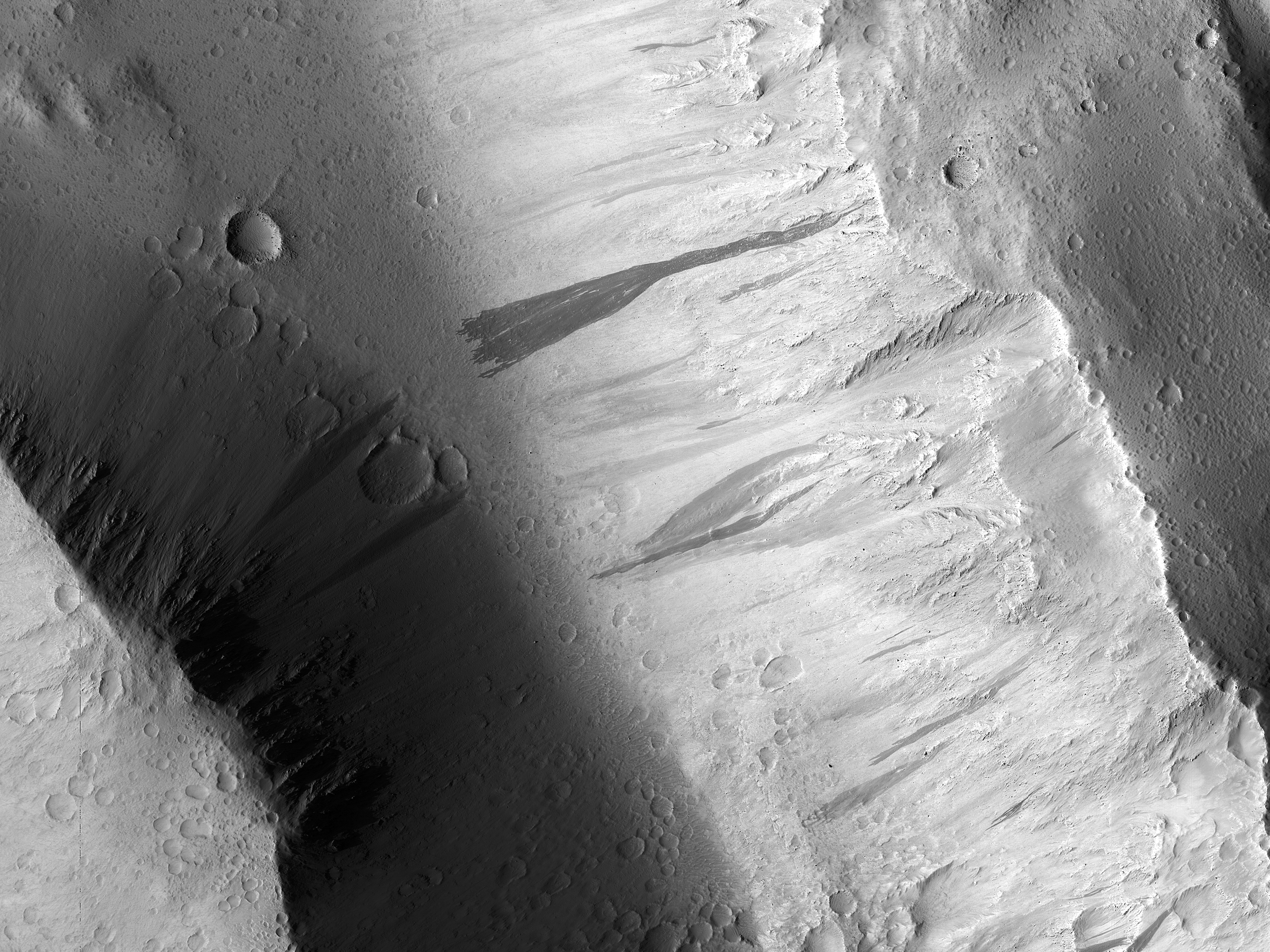Changes on the Martian surface are detected by imaging the same area more than once.
Here, we see several new dust avalanches on the slopes of ridges within the Olympus Mons Aureole. These changes occurred
within six years. (Also see the
animated GIF).
Dust avalanches create slope streaks that expose darker materials usually hidden below a lighter-toned layer. Cascading fine-grained material easily diverts around boulders or alters direction when encountering a change in slope (see the top right corner of the first close-up). The dark steak
in another close-up is approximately 1 kilometer in length that we didn’t see
in a previous image. Past avalanche sites are still visible and fading slowly as dust settles out of the atmosphere and is deposited on the dark streaks over time.
We also see boulders and their shadows that are a meter or greater in size. Movement of any of these boulders down the slope could trigger future avalanches.
ID:
ESP_055285_2030date: 13 May 2018
altitude: 283 km
https://uahirise.org/hipod/ESP_055285_2030
NASA/JPL-Caltech/University of Arizona
#Mars #science #NASA
